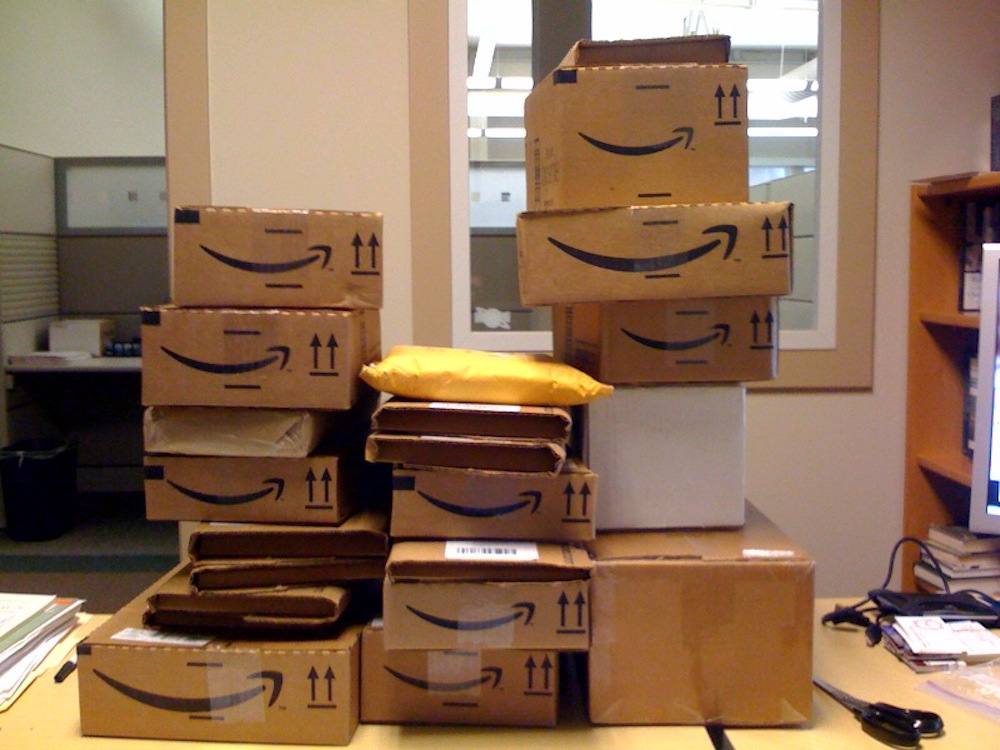SAN FRANCISCO — Amazon has been expanding its free, Prime same-day delivery service nationally, making it available in 27 metropolitan areas so far.
An analysis by Bloomberg found that in some of the largest cities where the service is available, it bypasses ZIP codes that are predominantly black.
The report, published Thursday, found that especially in Atlanta, Boston, Chicago, Dallas, New York City and Washington D.C., neighborhoods that have large black populations are less likely to have access to same-day service for Prime members.
In Boston, the Roxbury neighborhood is left out, found Bloomberg, which examined Amazon's public information on where it offers same-day Prime service and compared it to Census data on race.
In Atlanta, southern parts of the city didn't have access to same-day Prime. In Chicago, black portions of the city's South Side don't get deliveries. For New York City, all boroughs except for the predominantly black and Hispanic Bronx are covered. And in Washington D.C., the city's mainly black southeastern quadrant is excluded, the report found.
There is no indication that Amazon is trying to exclude African-American neighborhoods, the Bloomberg writers said, and Amazon says it's a matter of pride that it treats every shopper the same.
“We don’t know what you look like when you come into our store, which is vastly different than physical retail,” Amazon spokesman Greg Berman told Bloomberg.
Amazon told USA TODAY that it decides where to enable same-day delivery through a number of factors, including location of fulfillment centers and concentration of Prime members,
Factors "include distance to the nearest fulfillment center, local demand in an area, numbers of Prime members in an area, as well as the ability of our various carrier partners to deliver up to 9:00pm every single day, even Sunday," Amazon spokesman Scott Stanzel said in a statement. "We will continue expanding our delivery capabilities and are adding more zip codes rapidly."
But the lack of access raises the question of whether Amazon should consider race to make sure it isn't unfairly excluding certain groups from access.
It’s not necessarily intentional racism, but while companies don’t set out to be racist, “that doesn’t mean that systemic racism doesn’t affect the outcomes,” said Keith Hollingsworth, chair of the department of business administration at Morehouse College in Atlanta.
Amazon, he believes, should be taking some extra steps to make sure that discrimination isn’t occurring. He called the issue a blind spot, one that might have been avoided if Amazon had had more black and Hispanic people on its teams. “They might have pointed out these patterns, ones white workers might not have seen,” he said.
Historic basis
The Amazon delivery pattern replicates long-standing demographic realities in the United States that in many ways come out of the the National Housing Act of 1934. That Act created the Federal Housing Administration and was meant to make home buying easier and more affordable — but generally excluded African-Americans from getting mortgages, thereby cutting them out of many more affluent neighborhoods, especially after World War II.
Homes in predominately black neighborhoods were marked in red on FHA mortgage maps, the origin of the term red-lining.
"The Amazon algorithm operates off of an inherited cartography of previous redlining efforts, which created pockets of discrimination, the consequence being that the discrimination continues to be reproduced,” said Jovan Scott Lewis, a professor at the University of California, Berkeley’s Haas Institute for a Fair and Inclusive Society.
Amazon does not reveal the algorithm it uses to decide which areas will get same-day service.
Analysts say they expect, much like Amazon has done with its other analytics-based services, that it's offering same-day delivery in locations where it calculates it can get the best yield.
"It's logical for density to be the driving force rather than race," said John Haber, CEO of Spend Management Experts, a supply chain management consulting firm.
Amazon certainly isn’t the only company to zig away from black neighborhoods, says Hollingsworth. He lives in Atlanta, where he says “we don’t have Starbucks south of I-20.”
While the delivery pattern is a problem, it also represents an opportunity for African-American entrepreneurs, Hollingsworth said.
“They could say, ‘I’m willing to deliver to these neighborhoods. I’m willing to build a warehouse in these neighborhoods. Amazon could partner with them – it’s a win-win,” he said.
Follow Elizabeth Weise at @eweise.

![XXX IMG_AMAZON_1_1_49DIC7G6.JPG [image : 82069508]](http://www.gannett-cdn.com/-mm-/86e095e997b6d3ffebbb33fefafa3aac002bab74/c=0-0-2864-2448/local/-/media/2016/03/21/USATODAY/USATODAY/635941499949478216-AmazonXXX-IMG-AMAZON-1-1-49DIC7G6.JPG)

